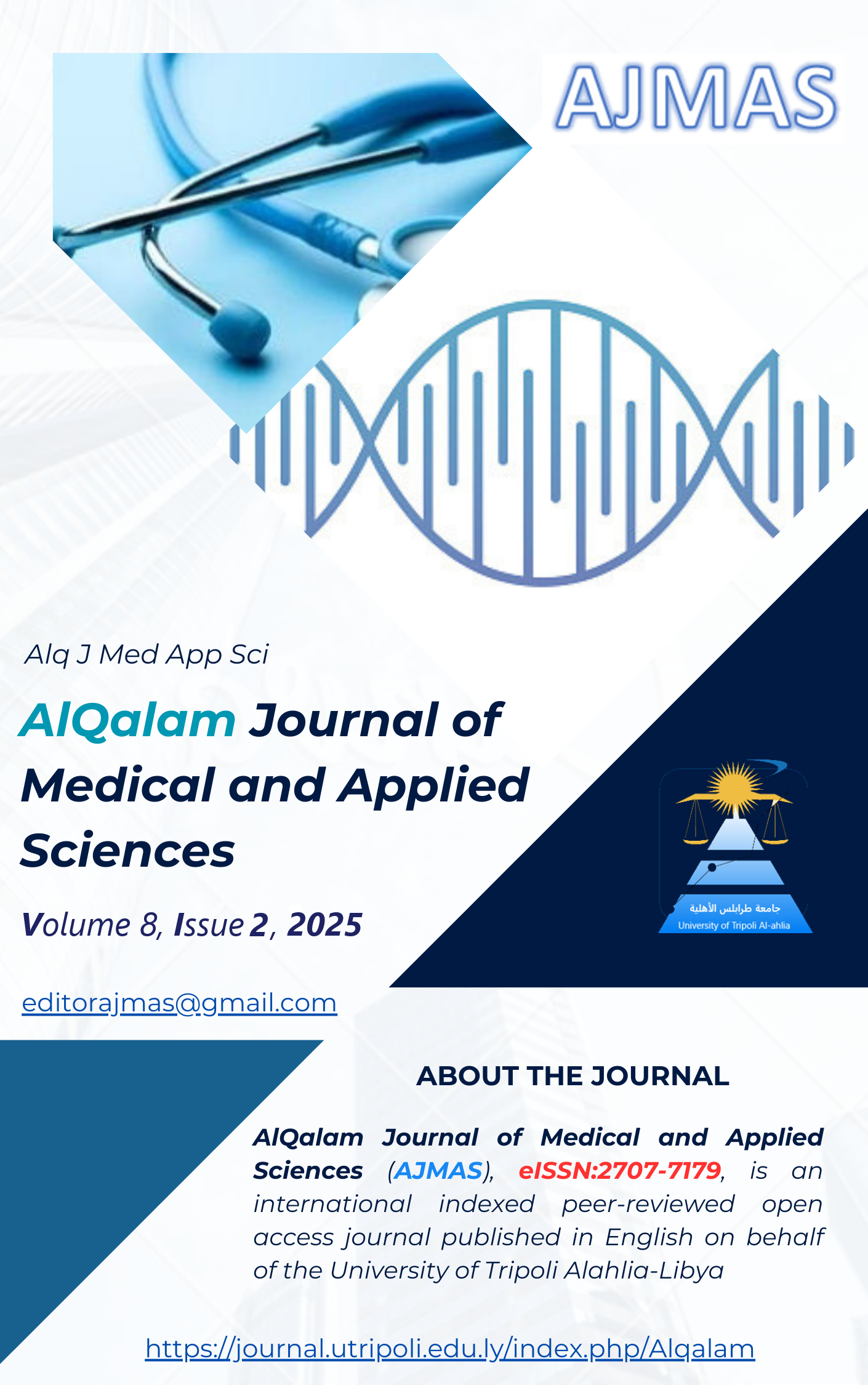Seroprevalence of Infectious Diseases Among Migrant and Local Libyans: A Cross-Sectional Study
DOI:
https://doi.org/10.54361/ajmas.258209Keywords:
Infectious Disease, Surveillance, Libya, Migrant Workers, Occupational Health.Abstract
Infectious diseases that involve hepatitis B (HBsAg), hepatitis C (HCV), HIV, and syphilis (VDRL) remain significant worldwide health challenges, particularly in low- and middle-income countries. Libya serves as both a transit and destination point for migrants, creating a unique context for examining the prevalence of these disorders among migrant workers and Libyan citizens. Comprehending variations in illness prevalence based on nationality and employment is essential for formulating targeted public health interventions. The objective of this research was to evaluate the seroprevalence of HBsAg, HCV, HIV, and VDRL among migrant workers and Libyan nationals undergoing mandatory occupational health screenings. A retrospective cross-sectional study was conducted at the Reference Laboratory, Western Mountain, Al-Rajban in Libya between December 2023 and February 2024. A total of 1,656 participants were assessed, including 1,434 migrant laborers and 223 Libyan natives. The VDRL test exhibited the greatest chance at 1.6%, followed by HBsAg at 1.4%, HCV at 0.9%, and HIV at 0.2%. Migrant workers had a greater prevalence of HBsAg at 1.6% and slightly elevated rates of HCV and HIV compared to Libyan residents, who reported no instances of these infections. Occupational research indicated that general workers had the largest disease burden, with statistically significant rates of HBsAg at 2.1%, HCV at 1.4%, and VDRL at 2.1%. Specialized workers had low illness rates, perhaps attributable to superior hygiene practices or underreporting. This research underscores the gap in infectious diseases between migrant workers and Libyan citizens, emphasizing the need for focused screening, enhanced workplace safety, and equitable access to preventive healthcare. The findings underscore the need for occupation-specific health interventions to mitigate risk, particularly for high-risk populations such as general laborers. Future research should include longitudinal studies and a larger sample size to validate these results and enhance global health equality.
Downloads
Published
How to Cite
Issue
Section
License
Copyright (c) 2025 Ismael Almlyan, Osamah Alrouwab, Issa Amara

This work is licensed under a Creative Commons Attribution 4.0 International License.















